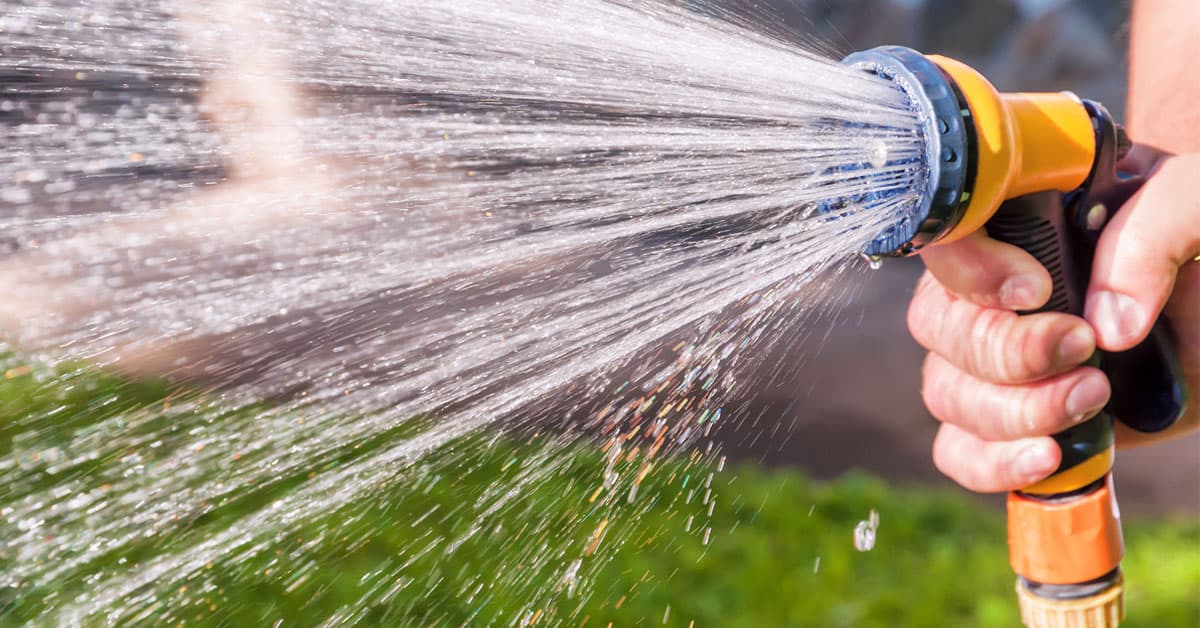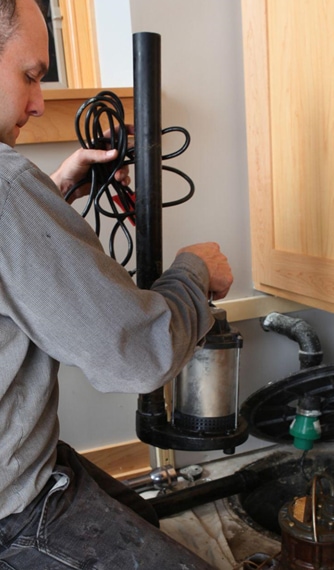What're your thoughts concerning Keep Your Sump Pump Clean, It'll Keep You Dry?

Sump pumps are vital components in lots of homes, specifically in locations prone to flooding or too much wetness. They assist protect against water damages by successfully getting rid of excess water from cellars or crawl spaces. However, like any other appliance, sump pumps require routine maintenance to guarantee they work properly when needed one of the most. Cleaning your sump pump is a crucial part of its upkeep, and understanding exactly how to do it effectively can conserve you from costly fixings and possible calamities.
Intro
Maintaining a tidy sump pump is vital for its correct performance and longevity. Neglecting this necessary task can bring about blockages, malfunctions, and ultimately, water damage to your home. Therefore, learning how to clean up a sump pump is important for homeowners who depend on these gadgets to maintain their cellars completely dry and secured.
Recognizing the Sump Pump
Prior to diving into the cleaning process, it's important to have a standard understanding of exactly how a sump pump functions. Commonly set up in a pit or container listed below the basement floor, a sump pump includes numerous essential parts, consisting of a pump, a float button, and a discharge pipe. When water accumulates in the pit, the float switch activates the pump, which after that pumps the water out via the discharge pipe, far from the structure's structure.
Signs of a Dirty Sump Pump
Understanding when your sump pump requires cleansing is important for preventing possible malfunctions. Some common indications that indicate a filthy sump pump include odd noises during operation, lowered water flow, and noticeable particles in the pit. If you observe any one of these signs and symptoms, it's necessary to cleanse your sump pump quickly to stay clear of any additional problems.
Getting ready for Cleansing
Prior to you begin cleansing your sump pump, it's important to take some safety preventative measures. Beginning by shutting off the power to the pump to avoid any electrical accidents. Furthermore, use ideal protective gear, such as handwear covers and goggles, to protect on your own from dust, debris, and potential pathogens.
Detailed Guide to Cleaning a Sump Pump
Shutting down the Power
Begin by detaching the power supply to the sump pump to avoid any kind of mishaps while cleansing.
Eliminating Particles and Dust
Utilize a bucket or a scoop to eliminate any type of visible particles, dust, or debris from the sump pit. Dispose of the particles properly to avoid it from obstructing the pump or the discharge pipe.
Cleansing the Pump and Float Switch
When the pit is free from particles, thoroughly eliminate the pump from the pit. Check the pump and the float button for any indicators of damages or wear. Utilize a soft brush or towel to clean up the surfaces and eliminate any kind of built up crud.
Purging the System
After cleaning up the pump and float switch, flush the sump pit with tidy water to get rid of any kind of continuing to be dirt or debris. This will help make sure that the pump operates efficiently and efficiently.
Checking for Proper Performance
Before re-installing the pump, do a quick test to make sure that the float button turns on the pump appropriately. Pour some water into the sump pit and observe the pump's procedure. If everything is functioning properly, you can rebuild the pump and reconnect the power supply.
Upkeep Tips to Maintain Your Sump Pump Clean
In addition to routine cleaning, there are a number of upkeep ideas you can follow to maintain your sump pump in optimum problem:
- Normal Examination: Examine your sump pump regularly for any type of indications of wear, damage, or obstructions.
- Maintaining the Surrounding Area Clean: Ensure that the location around the sump pit is devoid of debris, dust, and obstructions.
- Evaluating the Pump Occasionally: Check your sump pump occasionally by putting water into the pit and observing its procedure. This will aid you identify any type of possible issues before they escalate.
Verdict
Cleansing your sump pump is a vital element of its maintenance and guarantees that it operates effectively when you need it one of the most. By adhering to the steps described in this overview and incorporating routine maintenance into your routine, you can prolong the life expectancy of your sump pump and protect your home from water damage.
6 STEPS ON HOW TO CLEAN A SUMP PUMP PROPERLY
UNDERSTANDING SUMP PUMPS
Your sump pump plays a crucial role in protecting your home by managing and removing excess water. It primarily functions as a “shield”, guarding your basement against the damaging effects of water accumulation. The pump is housed in a sump pit in the lowest part of your basement, and its job is to pump out any water that collects there.
During heavy rainfalls or when snow melts rapidly, water can infiltrate your basement, posing potential risks like flooding, structural damage, and harmful mold growth. Here, the sump pump springs into action, pumping out the intruding water and directing it away from your home.
SAFETY FIRST
Before cleaning, remember to prioritize safety. Disconnect the sump pump from the power source to prevent any accidental electric shocks. Also, wear sturdy gloves to protect your hands from any sharp or dirty components within the pump.
REMOVE THE SUMP PUMP
After ensuring your safety, the next step is to remove the sump pump from its pit. Doing this might require careful maneuvering as you don’t want to damage any pump components. Once removed, clean the sump pit to remove any accumulated debris or sludge.
INSPECT THE PUMP
Inspect the pump for any visible signs of wear or damage. Check the power cord, float switch, and impeller housing. If any components look worn out or damaged, consider replacing them to ensure optimal performance.
CLEAN THE PUMP
Thoroughly clean the pump with warm, soapy water. Make sure to rid it of any dirt, gravel, or other debris that might impede its performance. You can use a toothbrush to clean the small, hard-to-reach parts of the pump.
REINSTALL THE SUMP PUMP
- Reinstall the pump into the sump pit
- Make sure it’s positioned correctly to remove the water effectively
- Once it’s back in place, reconnect it to the power source
TEST THE PUMP
Finally, pour some water into the pit to ensure the pump works correctly. It should start automatically and begin pumping out the water; if it doesn’t, check the power source and the positioning of the pump.
Remember, while cleaning your sump pump is an essential part of home maintenance, hiring a professional plumber for a thorough inspection and cleaning at least once a year is also important. This will ensure that your pump is in optimal condition, ready to protect your home from potential water damage.
BEST PRACTICES FOR CLEANING SUMP PUMP DISCHARGE PIPES
- Regular Inspection: Regularly inspect your discharge pipes, especially during heavy rainfall or snowmelt periods. Look for any signs of blockage or damage. Early detection of problems can prevent serious issues down the line.
- Periodic Cleaning: Over time, sediment and debris can accumulate in the discharge pipes, impeding the flow of water. Regular cleaning helps keep the pipes clear and functioning efficiently. You can use a high-pressure water jet to effectively clean the pipes.
- Insulation During Winter: In colder climates, discharge pipes can freeze, blocking the outflow of water. Protect your discharge pipes from freezing temperatures by insulating them with foam pipe insulation. This will ensure the sump pump can continue to discharge water even in freezing conditions.
- Proper Positioning: The discharge pipe should be positioned to direct water away from your home’s foundation. Improper positioning can lead to water seeping back into the basement. Ensure the pipe is long enough and angled correctly.
- Installation of a Check Valve: A check valve prevents water from flowing back into your sump pit after the pump has pushed it out. Installing a check valve helps maintain the efficiency of your sump pump and reduces the risk of flooding.
- Minimize Pipe Turns: Every curve or turn in the discharge pipe can decrease the efficiency of water flow. By minimizing turns and bends in your discharge pipe, you can increase the efficiency of your sump pump.
https://www.fullspeedplumbing.com/how-to-clean-a-sump-pump-properly9999/

I'm certainly very drawn to How To Effectively Clean A Sump Pump and I really hope you appreciated our piece. Those who liked our blog post if you please be sure to share it. Thanks a lot for taking the time to read it.
Click Here
Comments on “Verified Solutions for Taking Care of a Sump Pump”